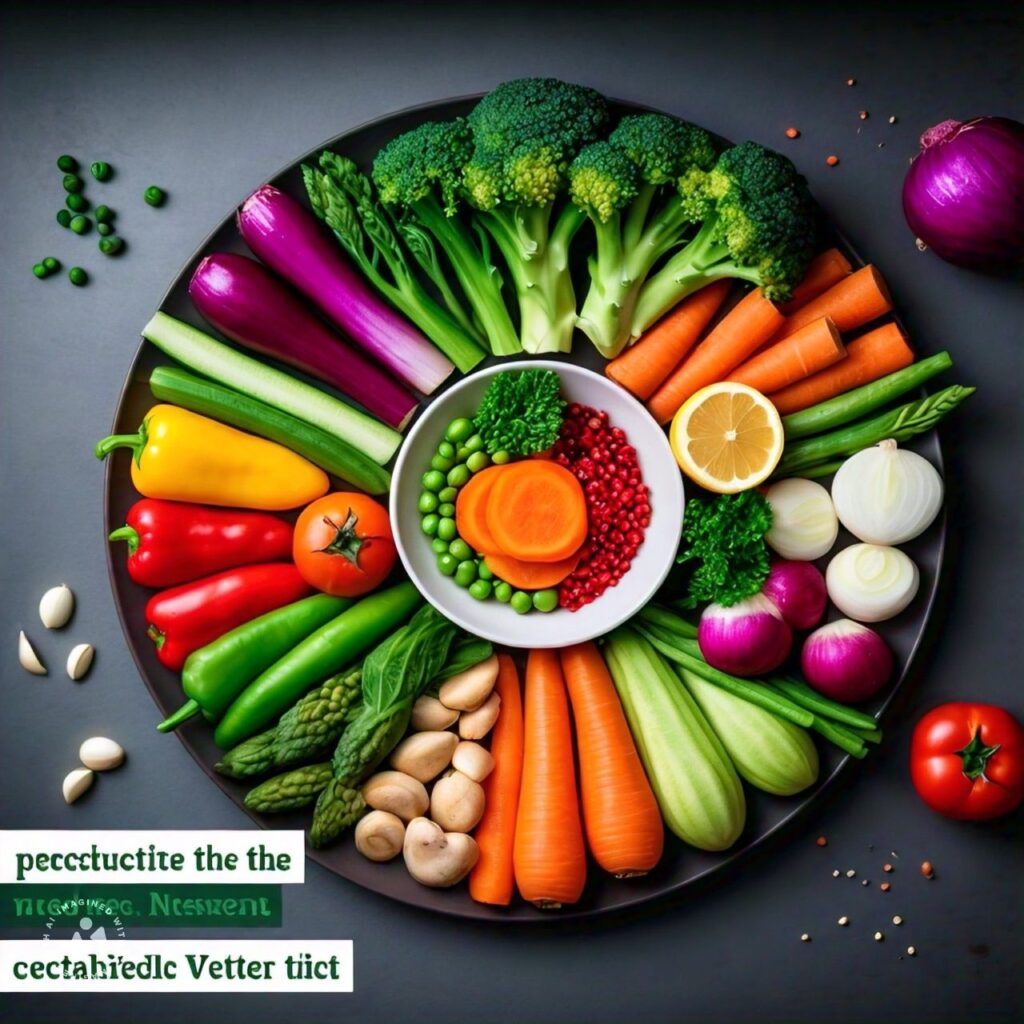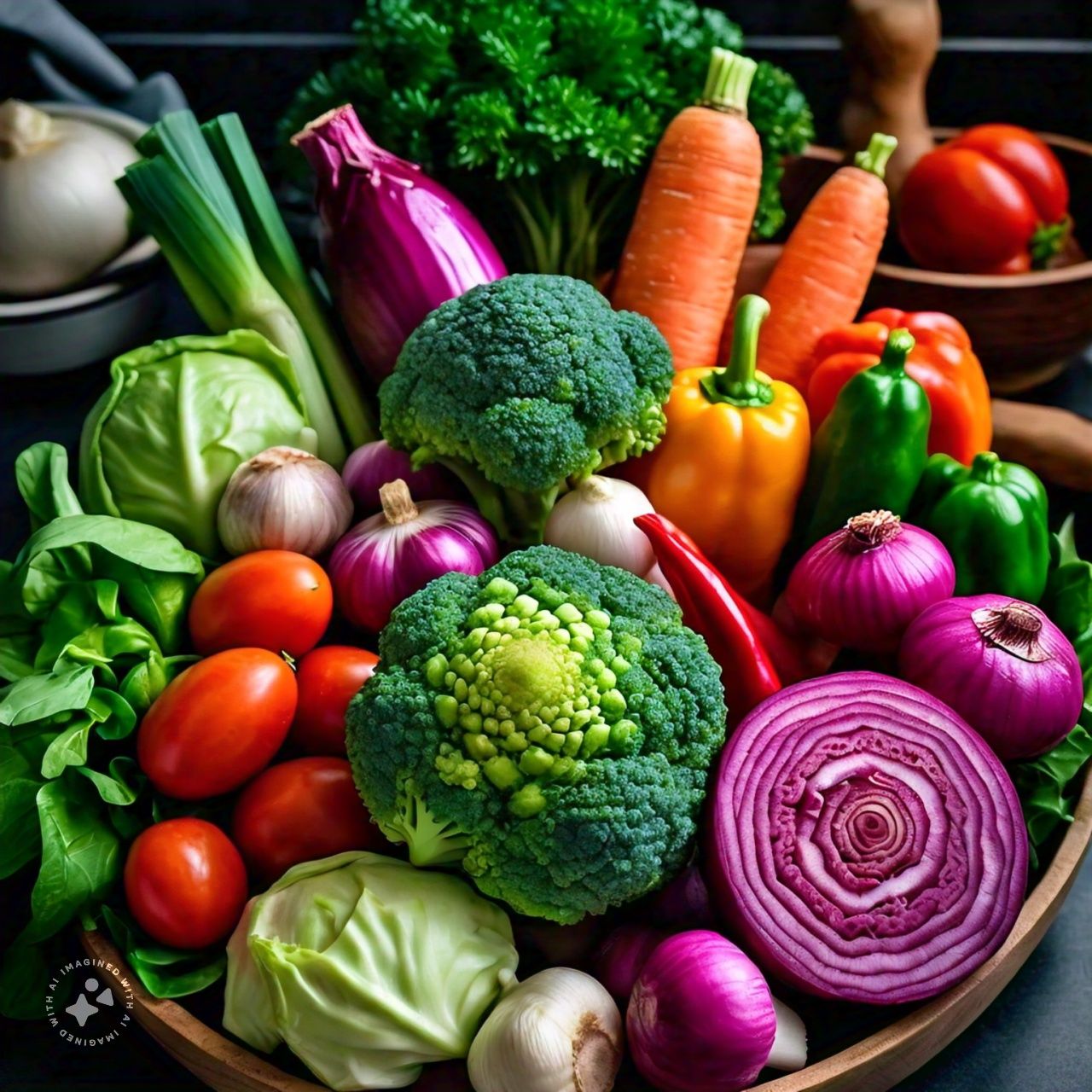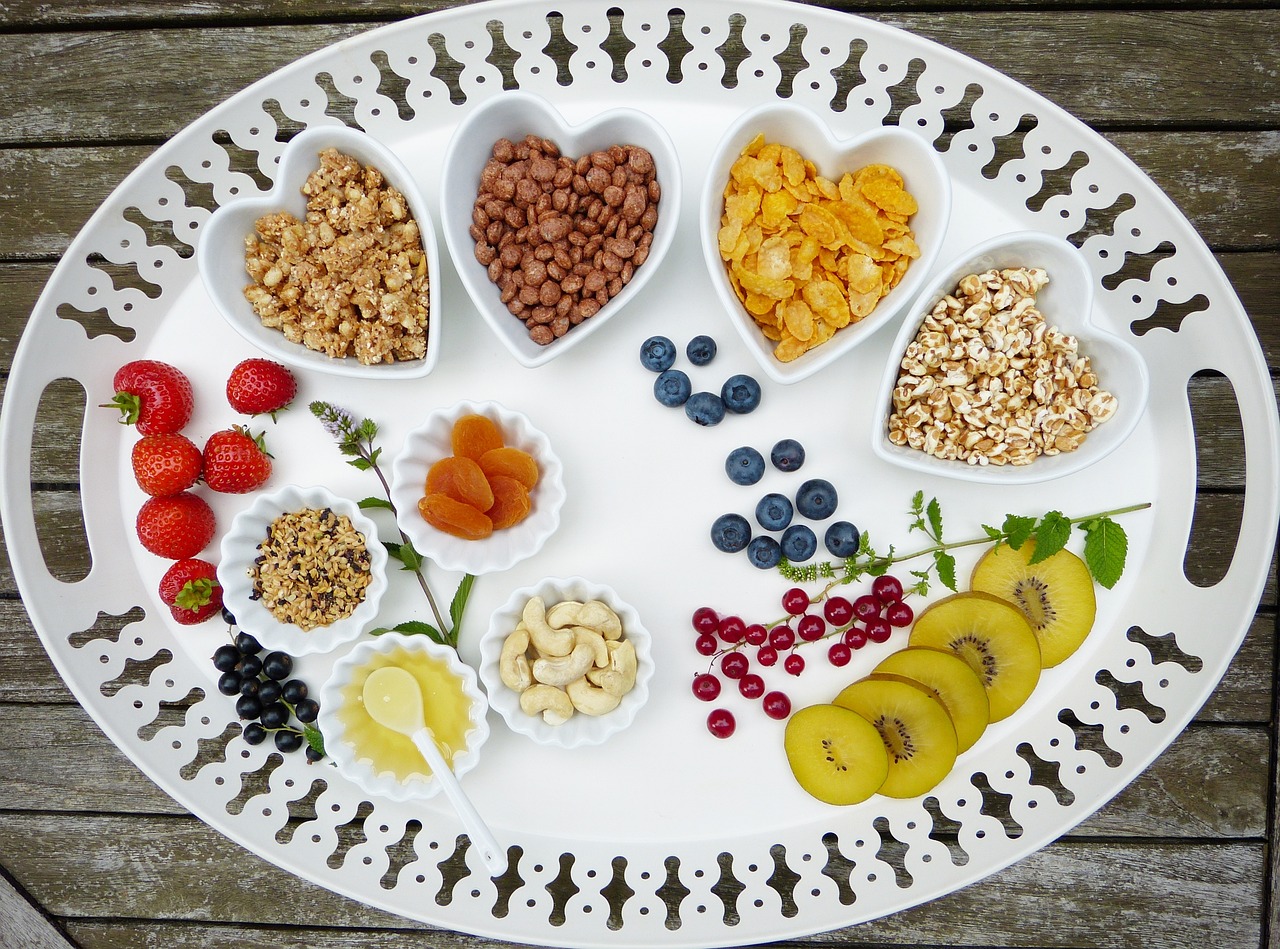“Unlocking the Power of Vegetables: A Comprehensive Guide to Their Essential Role in Daily Life”
Vegetables Are Essential for our Daily Health
Read Article https://rehanablogs.com/6-healthy-foods-and-harmful-foods/
The Vital Role of Vegetables in Daily Nutrition: A Comprehensive Guide
Introduction:
In the realm of nutrition, few things are as universally acknowledged as the importance of vegetables. From childhood to adulthood, across cultures and cuisines, vegetables form the cornerstone of a healthy diet. In this article, we delve into the myriad benefits of vegetables, exploring their nutritional value, health implications, and practical tips for incorporating them into our daily lives.

Nutritional Value:
Vegetables are healthful forces to be reckoned with, loaded with fundamental nutrients, minerals, fiber, and cell reinforcements They provide vital nutrients like Vitamin A, Vitamin C, potassium, folate, and countless others, all of which are crucial for maintaining optimal health. Moreover, vegetables are low in calories and fat while being high in fiber, making them an ideal choice for weight management and overall well-being.
Health Benefits:
The consumption of vegetables has been linked to numerous health benefits. Regular intake can reduce the risk of chronic diseases such as heart disease, stroke, certain cancers, and type 2 diabetes. The abundance of antioxidants in vegetables helps combat oxidative stress and inflammation, thereby bolstering the body’s defense against various ailments. Additionally, the fiber content in vegetables promotes digestive health, regulates blood sugar levels, and contributes to a feeling of fullness, aiding in weight control.
Variety and Versatility:
One of the greatest advantages of vegetables is their diversity. From leafy greens to vibrant root vegetables, there is an extensive array of options to suit every palate and dietary preference. Whether consumed raw, steamed, roasted, or blended into smoothies, vegetables offer endless culinary possibilities. Experimenting with different cooking methods, seasonings, and recipes can enhance the flavor and appeal of vegetables, making them an enjoyable addition to any meal.

Practical Tips for Incorporation:
Despite their numerous benefits, many individuals struggle to incorporate an adequate amount of vegetables into their daily diet. To address this, here are some practical tips:
1. Prioritize Variety: Aim to consume a diverse range of vegetables to ensure you receive a wide spectrum of nutrients.
2. Make it Convenient: Keep pre-cut vegetables readily available for snacking or quick meal preparation.
3. Get Creative: Experiment with new recipes and cooking techniques to discover exciting ways to enjoy vegetables.
4. Sneak them In Incorporate vegetables into dishes like soups, stews, casseroles, and pasta sauces for added nutrition.
5. Set Goals: Challenge yourself to consume a certain number of vegetable servings each day, gradually increasing your intake over time.
Read More Ariticlehttps://rehanablogs.com/
Which vegetable contains vitamin C?
Here are some vegetables that contain vitamin C ¹ ² ³ ⁴:
– Broccoli
– Brussels sprouts
– Cantaloupe
– Cabbage
– Cauliflower
– Kale
– Mustard greens
– Potatoes
– Red cabbage
– Tomatoes
– Sweet green pepper
– Hot green chili pepper
These vegetables can help you meet the recommended daily intake of vitamin C.
 Broccoli! A nutritious and delicious vegetable! Broccoli is a rich source of:
Broccoli! A nutritious and delicious vegetable! Broccoli is a rich source of:
1. Vitamin C: Boosts immunity and fights off infections.
2. Vitamin K: Fundamental for blood coagulating and bone health.
3. Fiber: Supports healthy digestion and satiety.
4. Vitamin A: Important for healthy vision, skin, and mucous membranes.
5. Antioxidants: Helps protect cells from damage and reduces inflammation.
6. Folate: Crucial for cell growth and development.
7. Potassium: Helps regulate blood pressure and supports healthy heart function.
Incorporating broccoli into your diet can have numerous health benefits, such as:
1. Supporting cancer prevention
2. Aiding in detoxification
3. Supporting healthy bones
4. Helping manage blood sugar levels
5. Supporting healthy gut bacteria
Enjoy your broccoli steamed, roasted, sautéed, or added to soups and salads!
 Cabbage! A versatile and nutritious vegetable! Cabbage is a rich source of:
Cabbage! A versatile and nutritious vegetable! Cabbage is a rich source of:
1. Vitamin C: Boosts immunity and fights off infections.
2. Vitamin K: Fundamental for blood thickening and bone health.
3. Fiber: Supports healthy digestion and satiety.
4. Antioxidants: Helps protect cells from damage and reduces inflammation.
5. Vitamin B6: Important for brain function, immune system, and heart health.
6. Manganese: Supports enzyme function, wound healing, and bone health.
7. Anti-inflammatory compounds: May help reduce inflammation and improve cardiovascular health.
Incorporating cabbage into your diet can have numerous health benefits, such as:
1. Supporting digestive health
2. Aiding in detoxification
3. Supporting healthy bones
4. Helping manage blood pressure
5. Supporting immune function
Enjoy cabbage in various forms, including:
– Raw in salads or slaws
– Fermented as sauerkraut or kimchi
– Steamed or braised as a side dish
– Added to soups or stews
– Used in stir-fries or sautéed with garlic as a flavorful side!
 Potatoes! A delicious and versatile root vegetable! Potatoes are a good source of:
Potatoes! A delicious and versatile root vegetable! Potatoes are a good source of:
1. Fiber: Supports healthy digestion and satiety.
2. Potassium: helps regulate blood pressure and supports healthy heart function.
3. Vitamin C: Boosts immunity and fights off infections.
4. Vitamin B6: Important for brain function, immune system, and heart health.
5. Manganese: Supports enzyme function, wound healing, and bone health.
6. Antioxidants: Helps protect cells from damage and reduces inflammation.
Potatoes also contain various phytochemicals and antioxidants that have been linked to several potential health benefits, including:
1. Reduced risk of heart disease and stroke
2. Support for healthy blood pressure
3. Anti-inflammatory effects
4. Support for healthy gut bacteria
Enjoy potatoes in various forms, including:
– Baked or boiled as a side dish
– Mashed or roasted with herbs and spices
– Grilled or pan-fried as a crispy snack
– Added to soups or stews
– Made into healthy fries (baked or sweet potato fries!)
Remember to eat potatoes in moderation, as they are relatively high in calories.
Read More Ariticlehttps://rehanablogs.com/
 Tomatoes! A juicy and nutritious fruit (yes, it’s a fruit!) that’s packed with:
Tomatoes! A juicy and nutritious fruit (yes, it’s a fruit!) that’s packed with:
1. Vitamin C: Boosts immunity and fights off infections.
2. Lycopene: A powerful antioxidant that reduces the risk of certain cancers and heart disease.
3. Potassium: Helps regulate blood pressure and supports healthy heart function.
4. Fiber: Supports healthy digestion and satiety.
5. 5. Vitamin K: Fundamental for blood thickening and bone health.
6. Folate: Crucial for cell growth and development.
7. Antioxidants: Helps protect cells from damage and reduces inflammation.
Tomatoes have been linked to several potential health benefits, including:
1. Reduced risk of certain cancers (prostate, breast, lung)
2. Support for healthy heart function and blood pressure
3. Anti-inflammatory effects
4. Support for healthy bones and osteoporosis prevention
5. Aid in managing blood sugar levels
Enjoy tomatoes in various forms, including:
– Fresh in salads or as a snack
– Cooked in sauces, soups, or stews
– Roasted or grilled as a side dish
– Juiced or blended in smoothies
– Sun-dried or dried for a crunchy snack
Remember, tomatoes are low in calories and rich in nutrients, making them a great addition to a healthy diet!
 Hot green chili peppers! They’re not only spicy but also packed with nutrients and antioxidants. Here are some of the key benefits:
Hot green chili peppers! They’re not only spicy but also packed with nutrients and antioxidants. Here are some of the key benefits:
1. High in Vitamin C: Green chili peppers are an excellent source of vitamin C, which boosts immunity and fights off infections.
2. Antioxidant Properties: They contain antioxidants like capsaicin, which helps protect cells from damage and reduces inflammation.
3. Anti-Inflammatory Effects: The capsaicin in green chili peppers has anti-inflammatory properties, which may help reduce pain and swelling.
 4. Supports Digestive Health: Green chili peppers contain fiber and antioxidants that support healthy digestion and may help reduce symptoms of irritable bowel syndrome (IBS).
4. Supports Digestive Health: Green chili peppers contain fiber and antioxidants that support healthy digestion and may help reduce symptoms of irritable bowel syndrome (IBS).
5. May Help Reduce Cancer Risk: The antioxidants and capsaicin in green chili peppers have been shown to have anti-cancer properties, particularly in reducing the risk of colon, prostate, and breast cancers.
6. Supports Immune Function: Green chili peppers contain vitamin C and other antioxidants that support immune function and may help reduce the severity of colds and flu.
7. May Help Reduce Pain: The capsaicin in green chili peppers can help reduce pain by blocking the production of a chemical called substance P, which transmits pain signals to the brain.
Remember, when handling hot green chili peppers, wear gloves and avoid touching your eyes or other sensitive areas, as the capsaicin can cause irritation. Enjoy them in moderation, as part of a balanced diet!
 Mustard greens!A nutritious and tasty expansion to any feast. Here are some key benefits and facts about mustard greens:
Mustard greens!A nutritious and tasty expansion to any feast. Here are some key benefits and facts about mustard greens:
Benefits:
– High in vitamins A, C, and K
– Rich in antioxidants and anti-inflammatory properties
– Supports healthy digestion and detoxification
– May help lower cholesterol and blood pressure
– Supports bone health and immune function
Facts:
– Also known as Brassica juncea
– Native to the Himalayan region
– Can be utilized in plates of mixed greens, sautéed as a side dish, or added to soups and stews
– Have a slightly bitter, peppery flavor
– Can be grown in cooler weather and can survive light frosts

Tips:
– Choose fresh, crisp leaves for the best flavor and nutrition
– Use in place of spinach or kale in recipes
– Add to smoothies for a nutritional boost
– Cook with garlic and ginger for added flavor
– Support local farmers by buying fresh, organic mustard greens!
Enjoy your delicious and healthy mustard greens!
 Cauliflower is a great source of vitamin C, with a single serving providing about 75% of the daily recommended intake. One cup of chopped cauliflower contains around 73 milligrams of vitamin C.
Cauliflower is a great source of vitamin C, with a single serving providing about 75% of the daily recommended intake. One cup of chopped cauliflower contains around 73 milligrams of vitamin C.
Here are some other vitamins and nutrients found in cauliflower:
– Vitamin K: 20% of the daily value (DV)
– Folate: 10% of the DV
– Vitamin B6: 10% of the DV
– Manganese: 7% of the DV
– Potassium: 5% of the DV
– Fiber: 4% of the DV
Cauliflower is also low in calories, with a single serving containing only 25 calories. It’s a great addition to a healthy diet and can be prepared in a variety of ways, including roasting, grilling, and sautéing.
 Cantaloupe! A juicy and sweet summer treat that’s packed with nutrients. Here are some key benefits and facts about cantaloupe:
Cantaloupe! A juicy and sweet summer treat that’s packed with nutrients. Here are some key benefits and facts about cantaloupe:
Benefits:
– full vitamin C or vitamin A
– Rich in potassium and antioxidants
– Supports healthy digestion and immune function
– May help reduce inflammation and improve eye health
-Low in calories and high in water content, making it a reviving and hydrating nibble
Facts:
– Also known as rockmelon or muskmelon
– Originated in Africa and Asia over 4,000 years ago
– Comes in various varieties, including Charentais and Galia
– Has a netted or reticulated skin surface
– Can be eaten fresh, used in salads, or made into juice or smoothies
Tips:
– Choose cantaloupes with a sweet aroma and a yellow or cream-colored spot on the underside
– Store at room temperature until ripe, then refrigerate
– Enjoy as a snack, dessert, or add to yogurt or oatmeal
– Use in savory dishes like salsas or salads for a sweet and tangy flavor
Enjoy your delicious and nutritious cantaloupe!
Read More Ariticlehttps://rehanablogs.com/
Conclusion:
In conclusion, vegetables are indispensable components of a healthy diet, offering a plethora of nutritional benefits and contributing to overall well-being. By prioritizing their consumption and adopting creative strategies for incorporation, individuals can harness the full potential of vegetables to optimize their health and vitality. Embracing the vibrant colors, flavors, and textures of vegetables is not only beneficial for our bodies but also enriches our culinary experiences, making every meal a celebration of nourishment and flavor.
Read more

















































